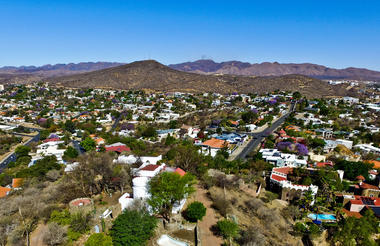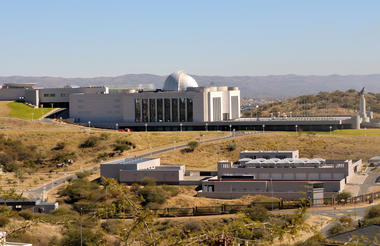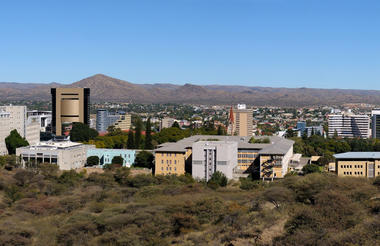Namibia is a fascinating tourism destination known for its breathtaking landscapes, diverse wildlife, and rich cultural heritage. Located in southwestern Africa, Namibia offers a unique blend of natural wonders, adventure activities, and a sense of tranquility. Namibia boasts some of the most dramatic and picturesque landscapes in Africa. From the vast Namib Desert, with its towering sand dunes and surreal landscapes at Sossusvlei, to the rugged beauty of the Fish River Canyon, the second largest canyon in the world, the country is a photographer's paradise. Namibia is home to a diverse range of wildlife species, many of which can be found in the renowned Etosha National Park. This park offers excellent game viewing opportunities, including sightings of lions, elephants, giraffes, zebras, and various antelope species. Namibia's conservation efforts have resulted in successful initiatives to protect endangered species such as black rhinos and cheetahs.
Situated in Central Namibia, the cosmopolitan city of Windhoek serves as the capital of the country. It is home to an international airport and a plethora of restaurants, shops, entertainment venues and accommodation options. The city is clean, safe and well-organised, with a colonial legacy that is reflected in its many German eateries and shops, and the widespread use of the German language. Windhoek has an interesting mix of historical architecture and modern buildings, many of which are worth a look, including the Alte Feste an old fort, the 1896 Christuskirche Christ Church, and the more contemporary Supreme Court.
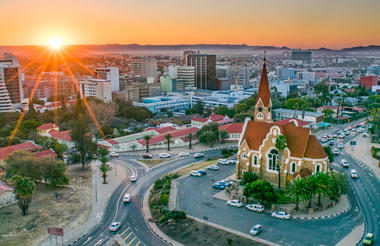
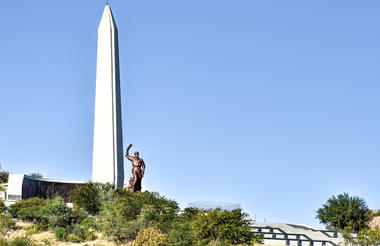
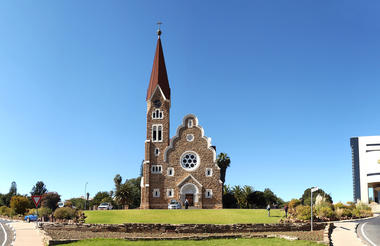
Sossusvlei is a perfect specimen of Nambia’s unspoiled desert beauty. The clear blue skies contrast with the giant red dunes to make this one of the most scenic natural wonders of Africa and a photographer's heaven. This awe-inspiring destination is possibly Namibia's premier attraction, with its unique dunes rising to almost 400 metres - making them some of the highest in the world.
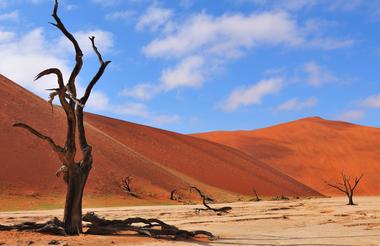
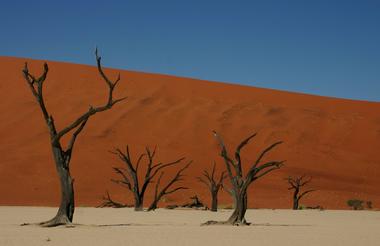
Set along Namibia's spectacularly scenic coast, the seaside town of Swakopmund is known for its wide-open avenues, colonial architecture, and its surrounding otherworldly desert terrain. Founded in 1892 as the main harbour for German South-West Africa, Swakopmund is often described as being more German than Germany. The town offers a wide variety of dining experiences. We can highly recommend The Tug Restaurant, Ocean Cellar or The Brauhaus

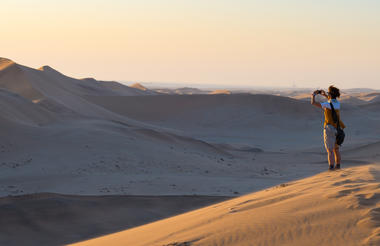
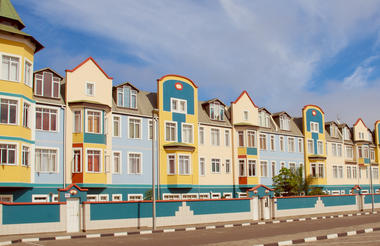
Twyfelfontein (Doubtful Spring), at the head of the grassy Aba Huab Valley, is one of the most extensive rock-art galleries on the continent. In the ancient past, this perennial spring most likely attracted wildlife, creating a paradise for the hunters who eventually left their marks on the surrounding rocks. Animals, animal tracks and geometric designs are well represented here, though there are surprisingly few human figures.
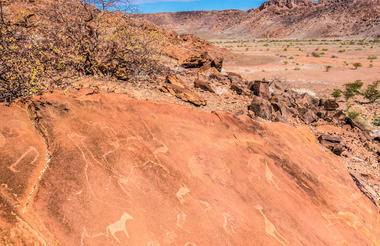
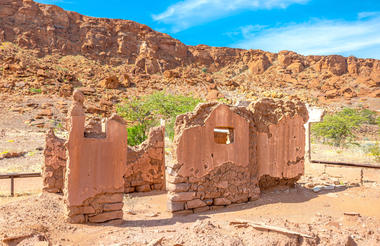
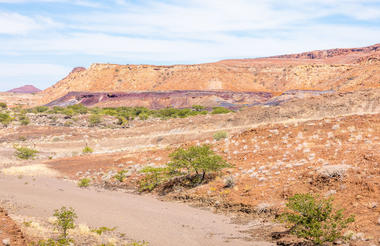
Located just south of the boundary of Etosha National Park in northwestern Namibia, Etosha South makes up the southern region of this wild paradise. The area is comprised of a collection of world class private game reserves. The national park can be accessed via the southern entrance at Andersson’s Gate. Visitors can catch a glimpse of a variety of wildlife including: lion, giraffe, elephant, white and black rhino, and a multitude of plains game. Popular activities include: enjoying an open 4x4 safari with an expert guide, half day or full day drives with the option of a picnic lunch with wine on the full day game drive.


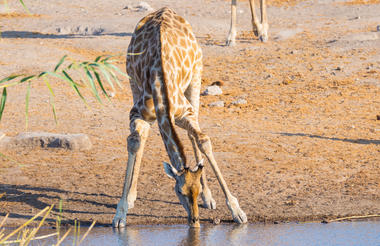
The eastern portion of the renowned Etosha National Park, recognized as one of the most accessible game reserves in Southern Africa, presents a captivating landscape. Etosha East encompasses expansive open plains interspersed with semi-arid savannah grasslands, punctuated by watering holes and secluded bush camps. Notably, a vast 5000-square-kilometer Etosha salt pan occupies a significant expanse of the eastern park boundary, even visible from space. This remote region is teeming with abundant wildlife, including lions, elephants, black rhinos, and giraffes. Additionally, a diverse array of birdlife, such as flamingos, ostriches, eagles, hornbills, and owls, inhabits the area.
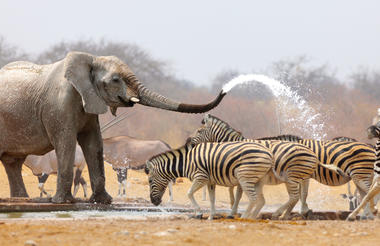

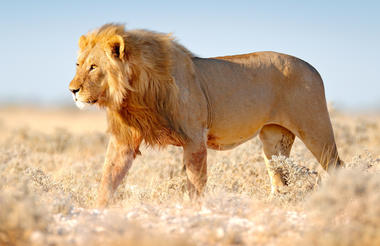
Midway between the spectacular Etosha National Park and the capital city of Windhoek, lies the well-known Okonjima Nature Reserve. The 22 000 hectare nature reserve is home to AfriCAT, a carnivore sanctuary, which gives the captive cats a second chance to be released back into the wild and become completely independent hunters in a protected area right in the middle of commercial cattle farmland. Visitors can enjoy a stay at a variety of excellent accommodation options including everything from luxury villas to secluded camping. Don't miss the opportunity to enjoy thrilling cat-tracking guided safaris, leopard-spotting, off-road night drives and learn about local San culture along the Bushmen trail.
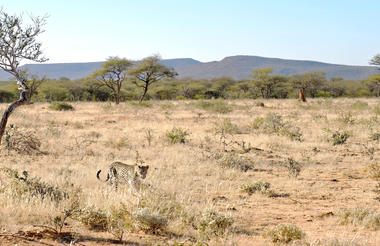
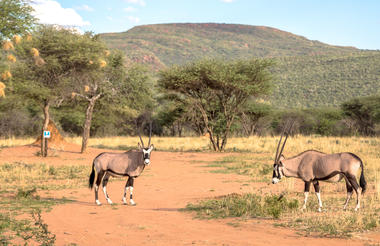
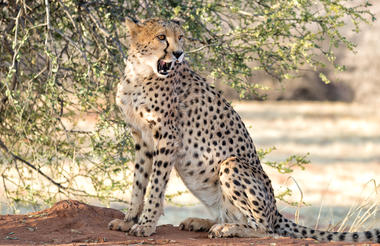
As previously described
